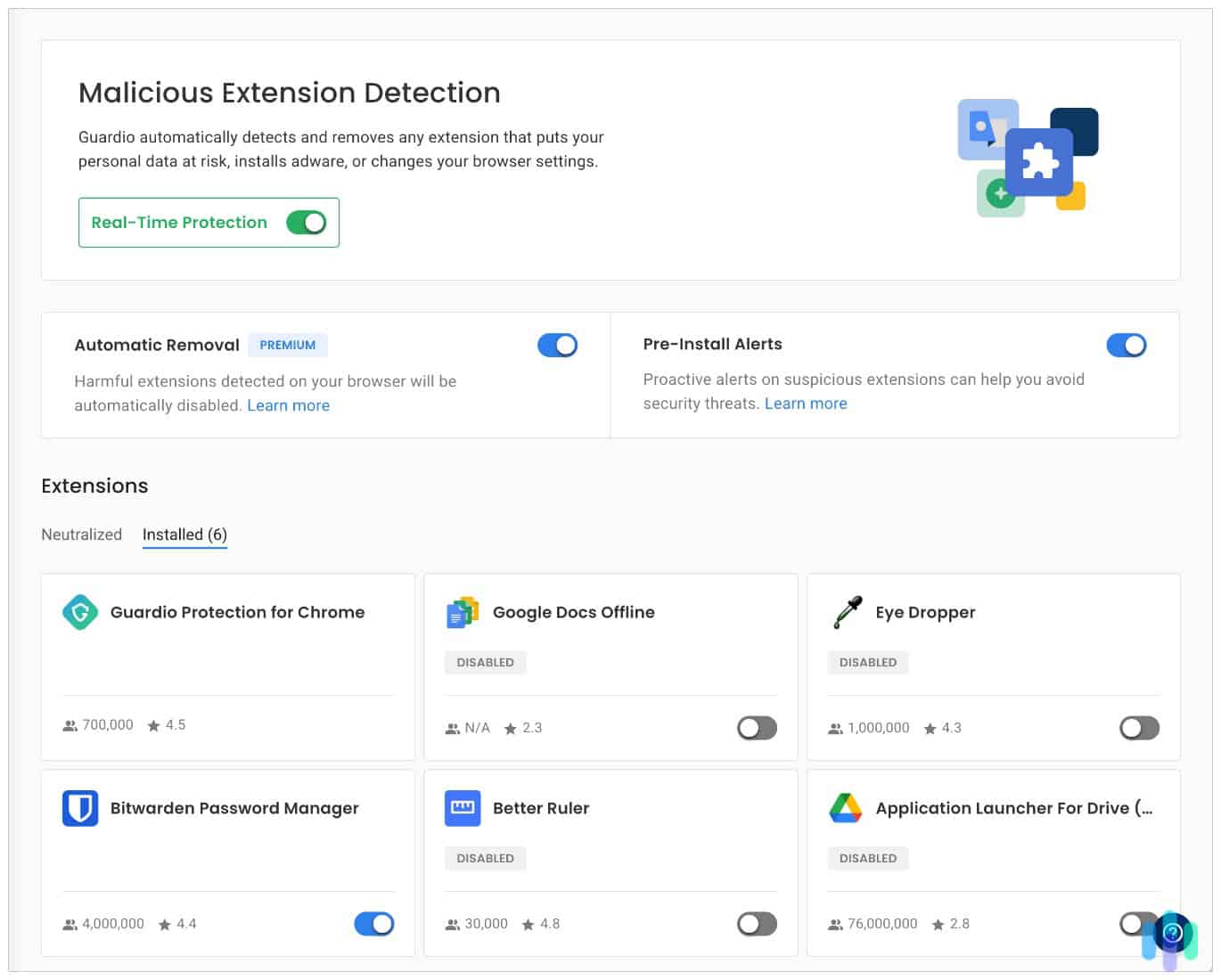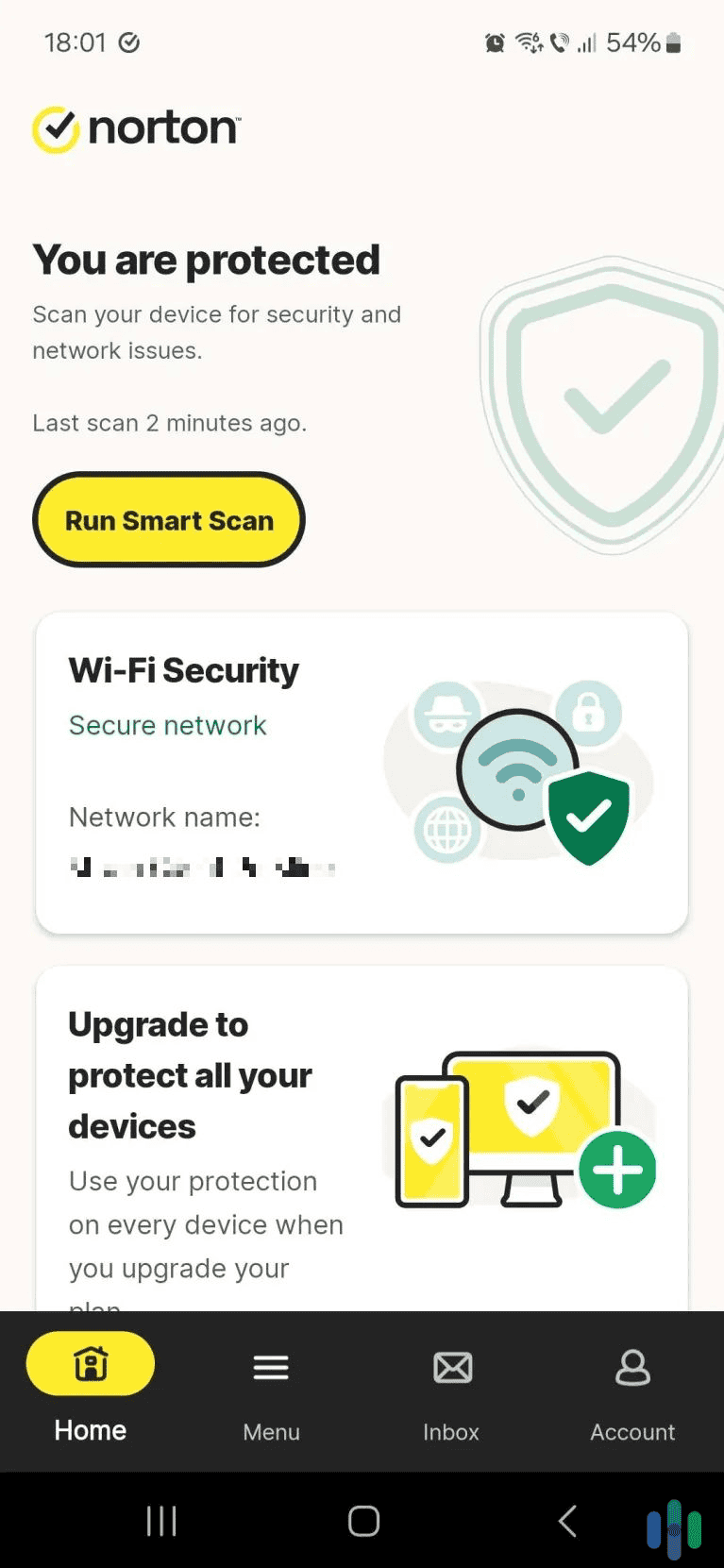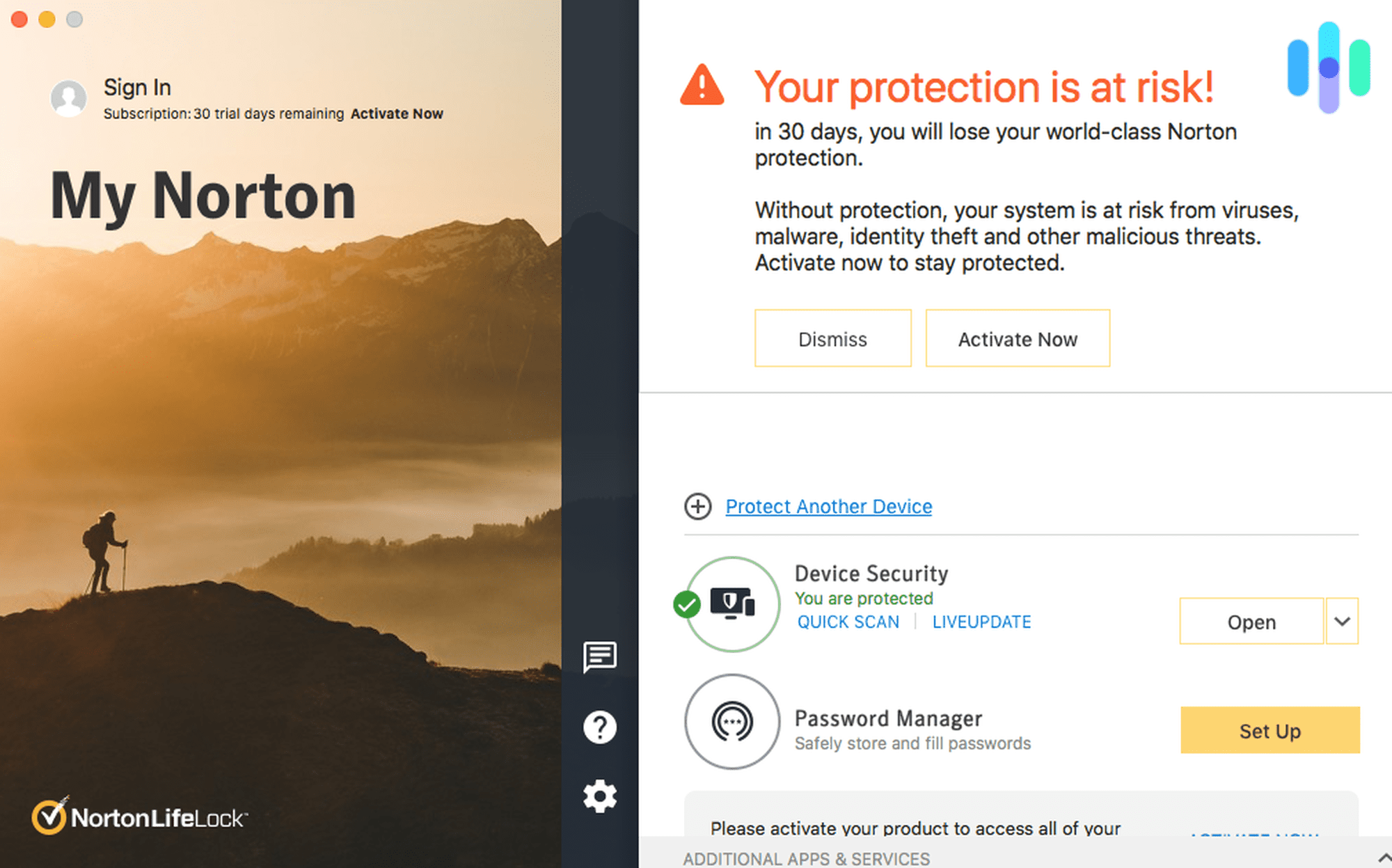Guardio Review and Pricing in 2025: A Cybercrime-Fighting Antivirus
Guardio is a lightweight antivirus for under $10 per month with all the smarts of the heavyweights.
 Brett Cruz, Digital Security Expert
&
Brett Cruz, Digital Security Expert
&
 Gene Petrino, Home Security Expert
Last Updated on Oct 13, 2025
Gene Petrino, Home Security Expert
Last Updated on Oct 13, 2025
What We Like
- Simple and lightweight: Guardio works directly in your browser so there’s hardly any setup and no bulky software to run.
- AI-powered protection: Guardio uses AI to catch modern threats, including ones that most traditional antiviruses miss, such as online scams.
- Data breach monitoring: Guardio monitors both email addresses and phone numbers for data breaches with additional phishing protection for Gmail.
What We Don't Like
- Doesn’t work with all browsers: Guardio doesn’t have a desktop app; only browser extensions for Chrome and Microsoft Edge.
- Value for money: Guardio works out to $10 monthly, but it doesn’t come with any perks like a VPN, password manager, or secure cloud storage.
- No system scans: Unlike most antiviruses, Guardio doesn’t scan devices for malware, which is still an important aspect of antiviruses in 2025.
Bottom Line
At $9.99 per month, Guardio isn’t the cheapest antivirus available, but it offers a few features that have been on our wishlist forever, such as extension monitoring and advanced protection against phishing, smishing, and even malicious push notifications. At the same time, it lacks some of the standard features we’ve come to expect from antivirus software, such as on-device malware scanning. So, is Guardio worth considering? We took it out for a spin. Find out what our cybersecurity experts thought about Guardio in this review.
>> Learn More: How to Remove Viruses from Your PC
Why Use Antivirus? The independent malware testing authority AV-TEST catalogs 450,000 new cases of malware every day.1 They’re not all doomsday viruses, but malware doesn’t have to be the end of the world to overturn your life. Installing antivirus software on your devices is still the best way to keep that from happening.
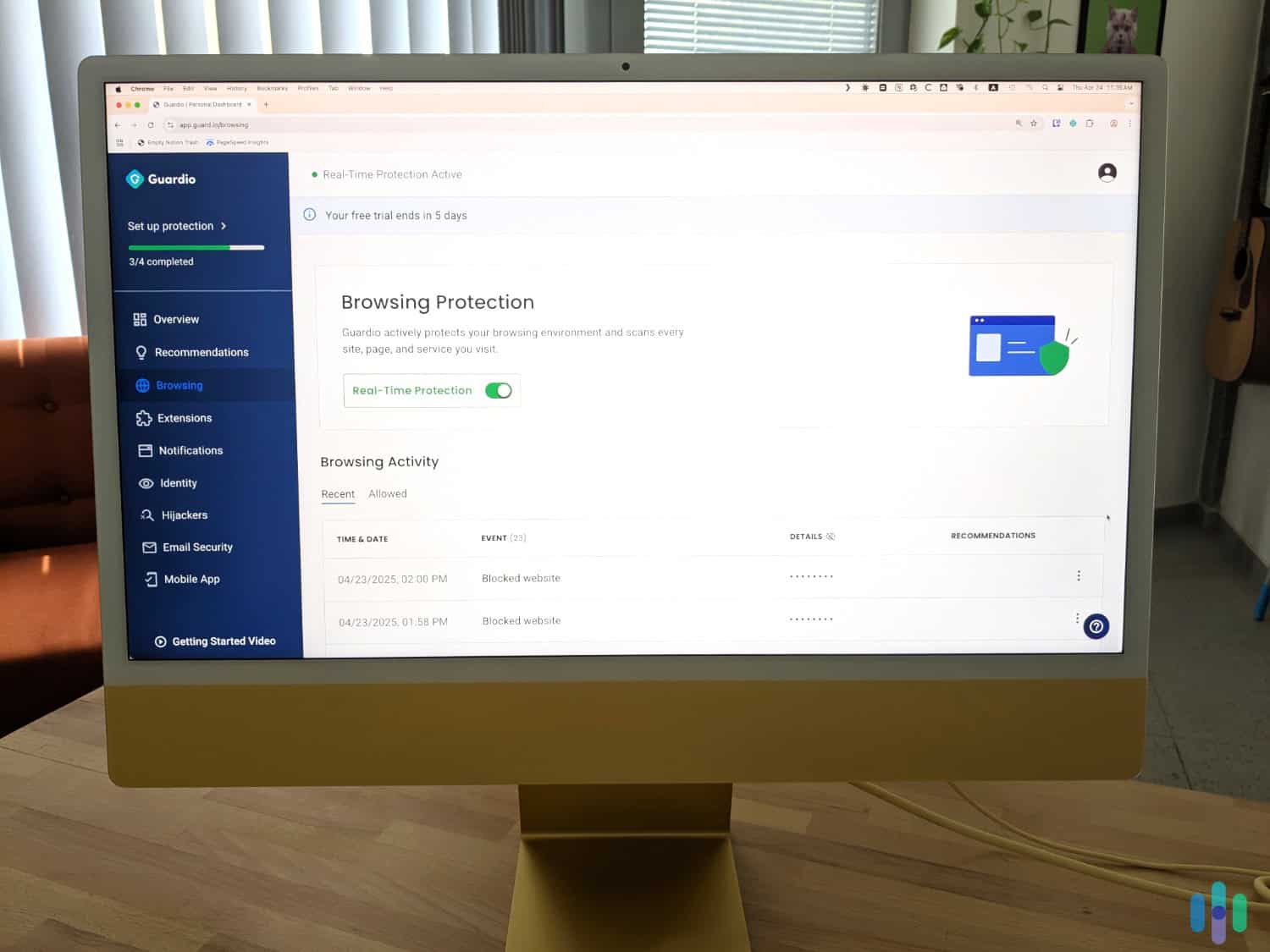
- Smart, lightweight browser extension that won’t slow down your computer
- Special antivirus features missing from traditional antivirus software
- Excellent customer support without a wait
How Much Does Guardio Cost?
Here’s a full breakdown of Guardio’s three plans, including discounts for paying annually and every two years.
| Monthly | Yearly | Every two years | |
|---|---|---|---|
| Individual | $14.99 | $119.88 | $215.86 |
| Duo (up to two users) | $22.99 | $183.90 | $331.06 |
| Family (up to five users) | $34.99 | $279.90 | $503.86 |
As you can see, Guardio’s pricing is straightforward: $119.88 per year for one user with up to five devices. That price may seem steep at first glance when you can grab either a Norton Deluxe antivirus subscription or our top-rated antivirus and VPN bundle Surfshark for half of that. But we really need to break down Guardio’s pricing to get an accurate picture of value for money.
>> Also: Our Top Antivirus and VPN Bundles of the Year
Guardio Compared to the Competition
| Antivirus | First-Year Cost | Monthly Cost |
|---|---|---|
| TotalAV Internet Security | $39.00 | $3.25 |
| Surfshark One | $50.85 | $3.39 |
| Guardio Individual | $119.88 | $9.99 |
| Norton Antivirus Deluxe | $49.99 | $4.17 |
| McAfee+ Premium | $39.99 | $3.67 |
The first thing to point out is that the best antiviruses usually offer honeymoon deals. You pay a lot less for the first year or so before the regular pricing sets in. For instance, you can purchase a Surfshark One plan for as little as $2.49 per month if you commit to 27 months. That’s dirt cheap. But after that, the monthly price jumps to $17.95 per month, which is kind of pricey. TotalAV, our top overall antivirus pick, works the same way. That’s just how most antivirus pricing works. Guardio’s rates, however, won’t go up or down.
The second thing to keep in mind with Guardio is what you get with your plan. Guardio doesn’t come with a VPN like Surfshark, TotalAV, Norton, and McAfee. It doesn’t come with any secure storage or a password manager either, like NordVPN’s VPN with antivirus bundles. And, most critically for your online security, Guardio isn’t a traditional antivirus that performs deep system scans. But it can provide real-time protection across your digital activity, whether you’re browsing on your laptop or on mobile devices.
Guardio is also a newer product and uses some very advanced behavior-based detection to protect your devices. And because it doesn’t require any system software, it’s lightweight and hardly requires any setup.
>> You Might Like: This Year’s Top Password Managers
Guardio’s Features
As we touched on above, Guardio isn’t packed with tons of extra software like some of the heavyweight antiviruses we’ve tested in our reviews. Still, it offers some protections every antivirus ought to have. Here’s a rundown of Guardio’s best features:
- Browsing protection
- Scam and phishing protection
- Data leak alerts
- Extension protection
- Email and phone security
- Search hijacking protection
- Email security
Browsing Protection
Guardio protects you as you browse. It scans and cloud-tests any site you visit, so theoretically it should be very good at rooting out malicious online content. It also gives you a log of the bad sites it’s blocked so you can review its decisions and whitelist any over-aggressive choices.
>> Learn More: A Complete Guide to Private Browsers
Scam and Phishing Protection
Online scams come in many shapes, making them harder to detect than malware. At least with malware, antiviruses can look at a file’s code and signature to see if it’s malicious. Detecting scams is more complex, as scams usually involve social engineering rather than bad code. Even more concerning, threat actors are turning to AI to make their schemes even more convincing.
To combat that, Guardio uses AI to detect scams. Guardio’s AI is trained to recognize and flag dangerous spam, including malicious emails and phishing attacks. It does this by analyzing message content, sender reputation, and link behavior, among other things. It’s similar to how Norton’s Genie Scam Detector works. If there’s a link in the scam message too and you try to click it, browsing protection kicks in to block the site. We tried it on over a dozen known phishing sites, and Guardio caught most of them.
Data Leak Alerts
Guardio also alerted us to data leaks that include our personal information, particularly our email addresses. This is also important in fighting against cybercrime, because leaked credentials and personal information can be used to target you with more online scams.
During testing, Guardio spotted leaked financial information (an old credit card number) and a data breach that involved one of our email addresses.
We’d say, however, that data leak alerts aren’t proactive. This feature doesn’t resolve the leak; it just tells you about it so you can take action. If it spots a leaked credit card, for example, you should call your bank and ask for a new card.
Our Take:
Data leak alerts work similarly to identity monitoring offered by identity theft protection services. In fact, if you want more robust monitoring, we’d recommend checking out LifeLock. It’s one of the best identity protection services, and some LifeLock plans include antivirus powered by Norton.
Extension Protection
This is a very interesting feature and something we haven’t seen before. But we should see more of it because fraudsters love sneaking nasty stuff like Trojans and adware in through rotten extensions. Guardio has a separate tab for extension monitoring, where you can keep an eye on all your Chrome extensions, which is a nice touch.
>> Must Read: Do I Have Adware on My Computer?
Search Hijacking Protection
Search, or browser, hijacking happens when a criminal sneaks malware like a worm onto your device that then takes control of your browser. It may force you to use a search engine you don’t normally use or lead you to scammy ads. It might even redirect you to bogus homepages, which can be very dangerous. Guardio claims to be able to detect hijacking attempts and redirect you to safety.
A Tip from Our Security Experts: Most of Guardio’s premium security features were enabled by default, but we did have to manually select our preferred search engine for search hijacking protection to kick in.
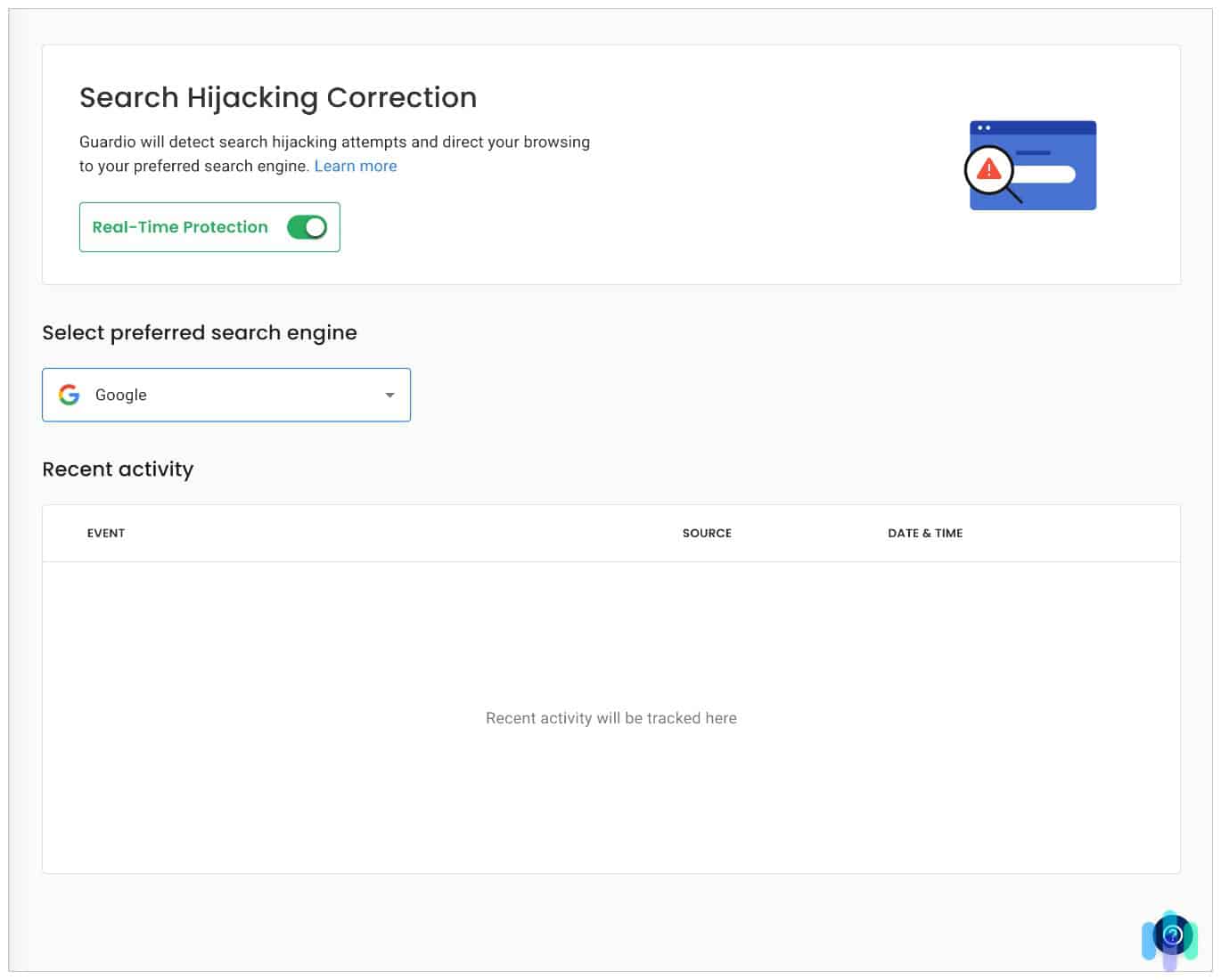
Getting Started with Guardio
The most important advice we can give you about setting up Guardio is not to create your account with an email alias. Email aliases, or masks, are burner addresses you can use for signups to keep your actual address out of the hands of data brokers. This is internet privacy 101, and a security precaution we always recommend, but Guardio doesn’t like aliases and won’t send your login verification code if you use one.
To sort this out, we had to involve support. Guardio’s (mostly) human email support is blazing fast in most cases, but they couldn’t help here. In the end, we deleted our original account and signed up again with a Gmail address. After some fairly minor hiccups, we were able to get Guardio up and running. We signed up for a premium plan, which gave us a full seven-day free trial of all Guardio’s advanced features.
FYI: Unusually, Guardio also has its own in-house team of human researchers who actively seek out novel malware and scams. In fact, it was the Guardio team that uncovered a massive subdomain hacking scam in 2024 that had infiltrated the likes of MSN, McAfee, CBS, Marvel, and eBay.2
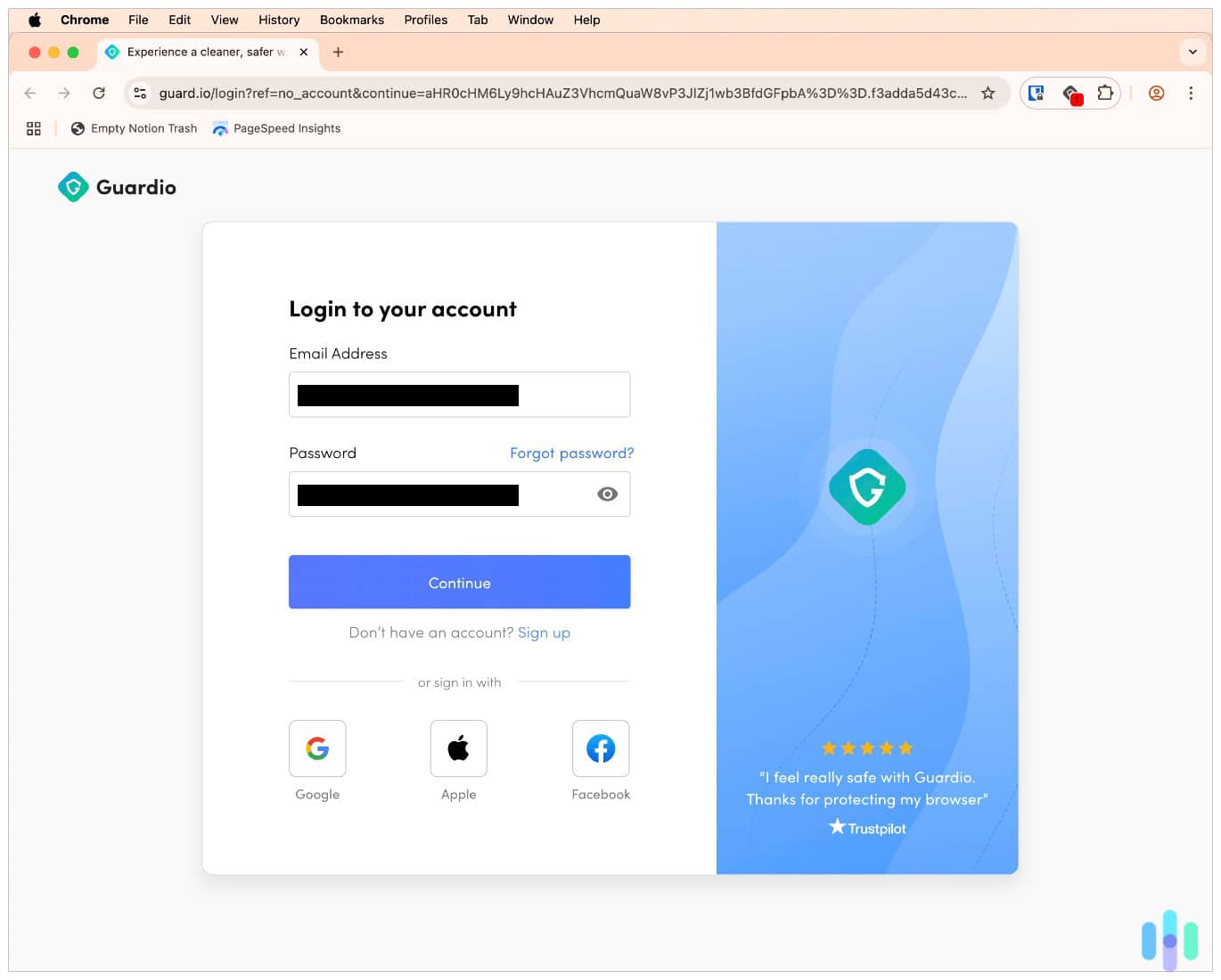
As we mentioned up top, there’s not a lot to do with Guardio and no software to download. We logged into our Guardio account through the Chrome browser extension (above), which opened up our dashboard. Then Guardio led us through the rest of their four-step security set-up, which took a few minutes.
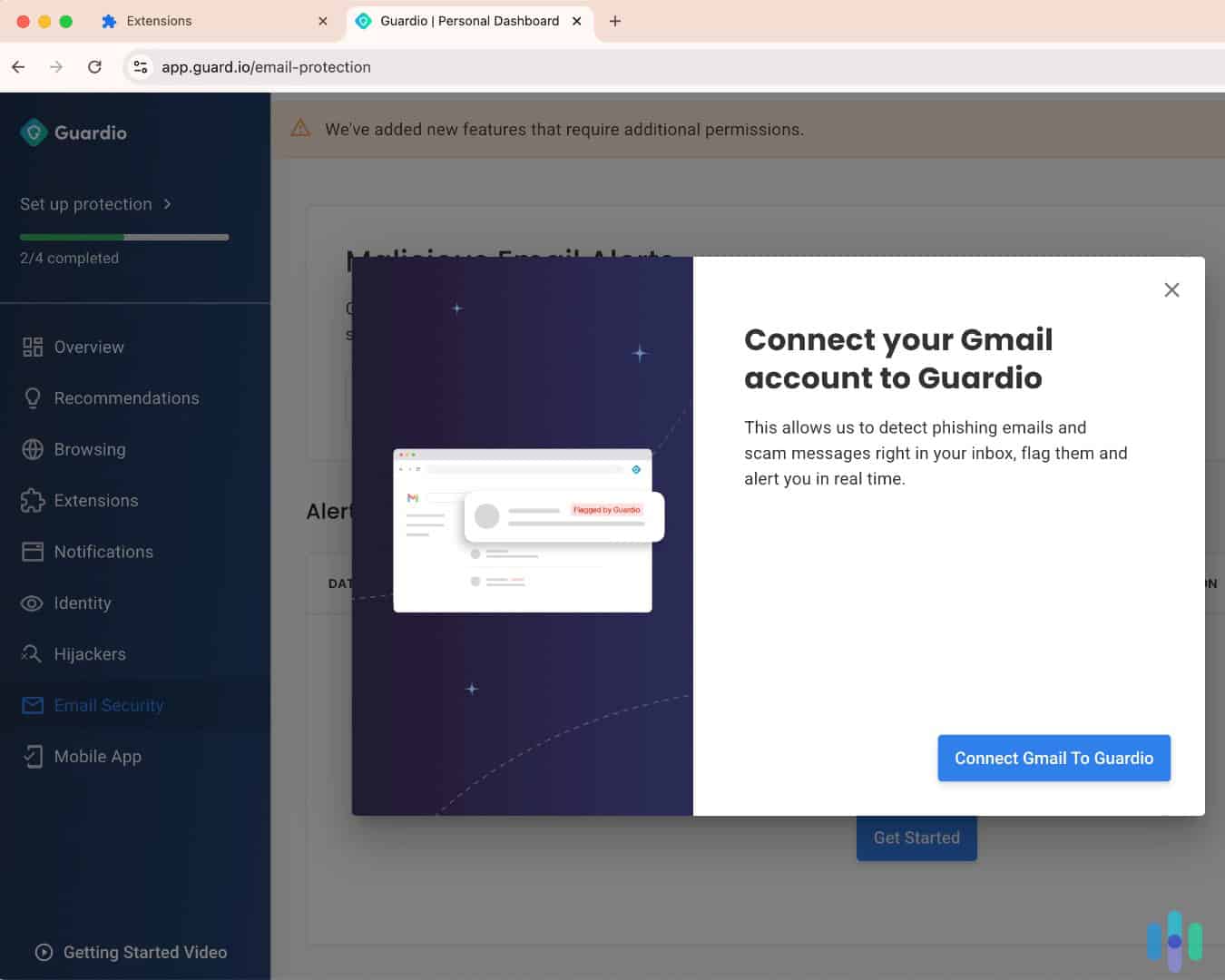
Important! Guardio only works with the Chrome and Microsoft Edge browsers on desktops. So if you’ve cut ties with those tech giants in favor of a more privacy-based browser, you won’t be able to use Guardio. Hopefully, Guardio will add a few more desktop browser choices in the future.
Our Experience: Guardio in Action
Malware can end up on our devices in a number of ways and it’s a zero-sum game. So if you’re going to invest in antivirus, whether you’re paying $3 a month or $10, it needs to work in every case. While Guardio worked quite well in some situations, it was hit or miss in others. Occasionally, it just left us scratching our heads as to just what was going on.
We try to duplicate the malware scenarios our readers might end up in. So in our first round of malware tests, we simply tried to sneak a few malicious files past Guardio. We used the Anti-Malware Testing Standard Organization’s (AMTSO) test viruses for these tests.3 AMTSO’s files simulate live viruses to trigger antivirus defense mechanisms, but aren’t actually malicious.
In our first test, Guardio performed well, flagging the virus before we could download it. But when we tried to smuggle the same virus past Guardio off a simulated page redirect — a common enough exploit used by hackers — it slipped right by.
>> Don’t Miss: How to Protect Yourself from the Next Generation of Online Scams
We also tried downloading viruses lurking in a battery of compressed files because, again, this could happen to anybody downloading an attachment. Guardio blocked some of the malware-laden files, but let others by. In some cases, it didn’t block the files but they didn’t end up in our downloads folder either, so we weren’t sure what was happening.
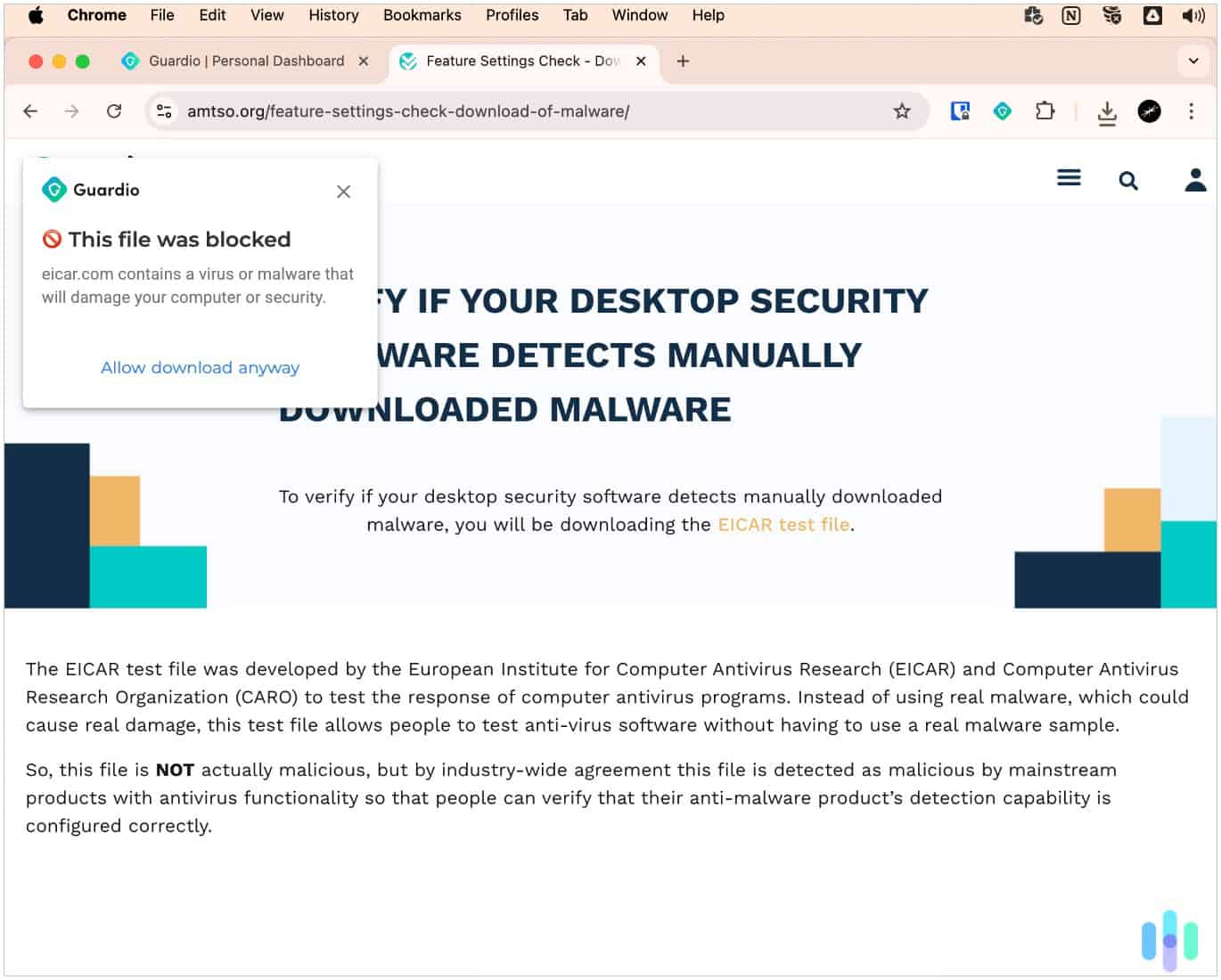
When we switched to Firefox, all the files landed in our downloads folder, which is what we expected. Guardio doesn’t work with Firefox. This highlights a key security issue with Guardio. You have to be browsing with Chrome or Edge; otherwise, you’re at risk.
FYI: Malware detection and browsing protection don’t work outside the browser, but even if you’re using a different browser, scam and phishing protection still works.
Malicious Sites Tests
To push Guardio a little harder, we went to PhishTank and CERT, two phishing verification platforms that collect and register malicious URLs. We tried to access 50 random websites they’d flagged as dangerous. Out of those 50 attempts, Guardio flagged and blocked about half of the malicious URLs. That said, its catch rate for websites flagged by CERT, which is updated 24/7, was over 80 percent.
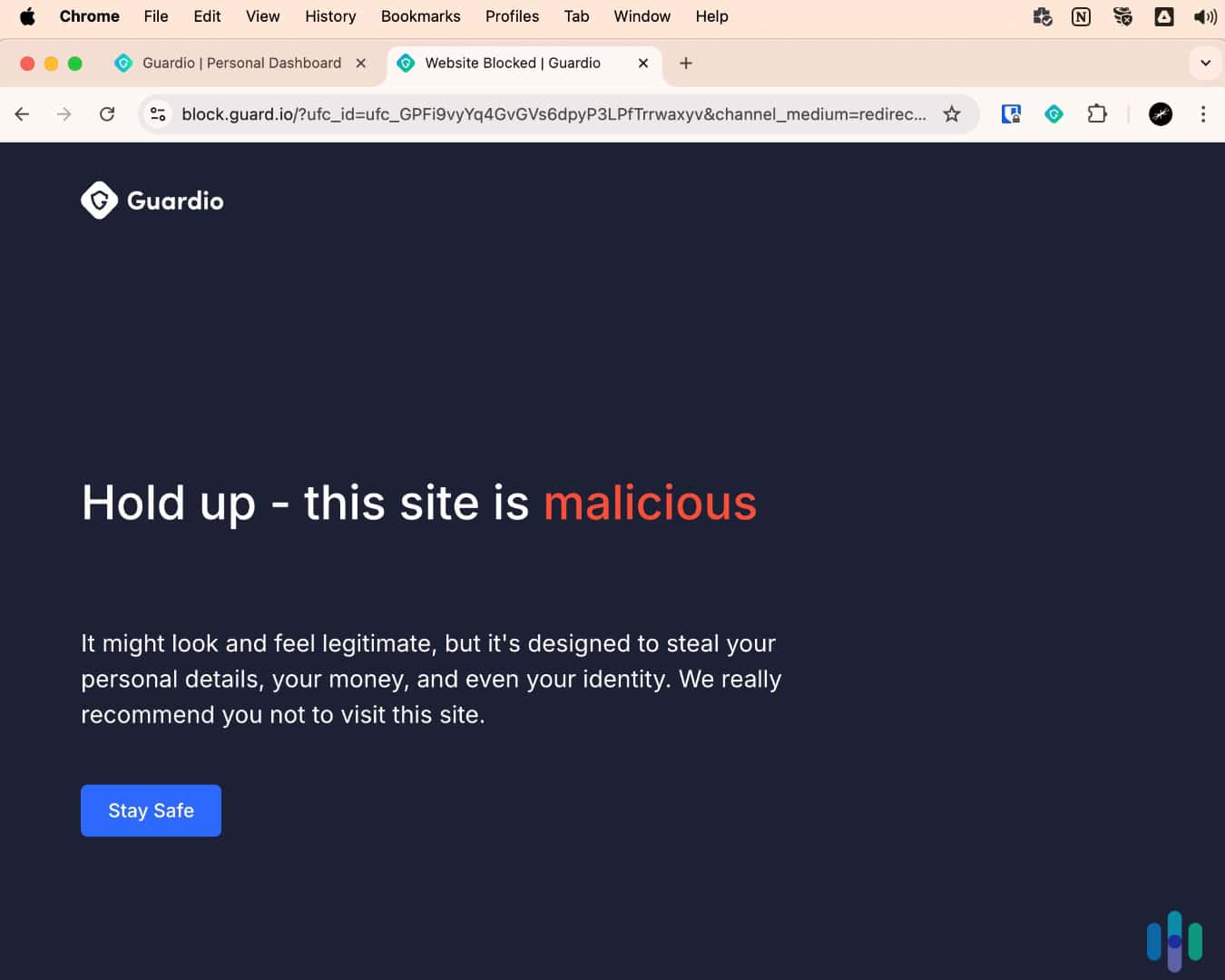
Guardio could make the case that it didn’t flag the bad sites because they weren’t dangerous. We wouldn’t really know. It also isn’t clear if our favorite antiviruses would have fared any better. However, there were a few cases that gave us pause.
One suspicious site Guardio didn’t catch was a website with a fake Nivea sweepstakes (and a possibly fraudulent signup form). This was a big miss. On subsequent visits to the same malicious sites, Guardio also often failed to give us any warnings. Even more puzzling, these second visits would show up on our dashboard as blocked when we’d just accessed them.
Phishing Tests
Guardio works with Gmail to spot phishing emails, so, again, you have to be fully committed to the Google ecosystem to take advantage of this feature.
Live testing phishing protection is a little tricky. Google is already pretty good at catching phishing scams and almost always flags them and sends them to our spam folders. We tried to trick Guardio anyway by crafting an email from a fake crypto outfit, peppering the email with all the usual phishing catchphrases: “dear user,” “urgent,” “confirm new password,” etc.
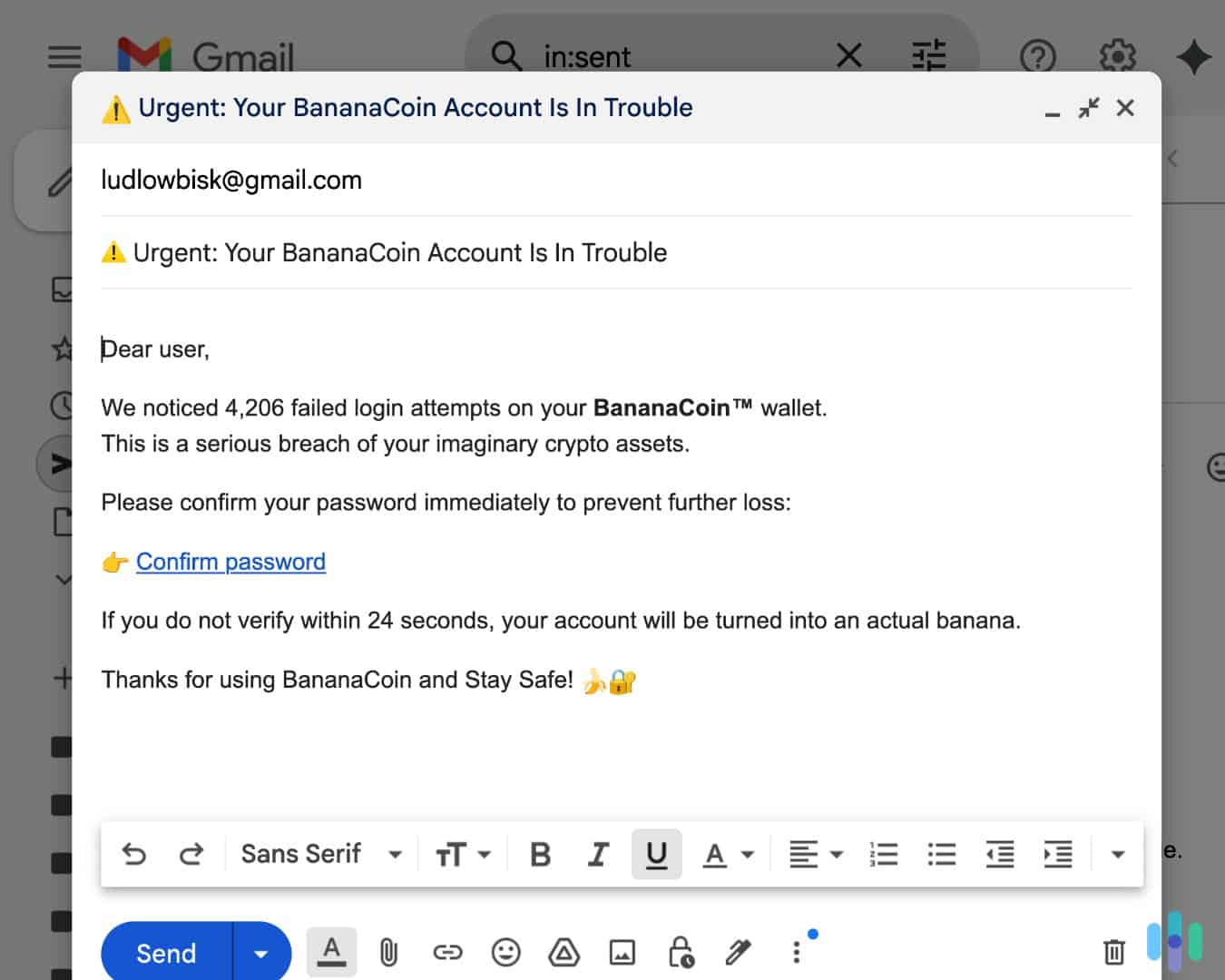
As expected, Google sent the email right to spam, which is a feather in Google’s cap. Unfortunately, Guardio was silent.
Pro Tip: We saw that Guardio had conveniently set up a “flagged by Guardio” label in our inbox for blocked phishing attempts. That was nice. Even better, though, would have been if our fake phishing email had been “flagged by Guardio.”
Guardio Mobile Experience
Guardio’s mobile app doesn’t use a browser extension so we could use any browser we wanted and stay protected — though we did test the app on both Firefox and Chrome just to make sure. The experience was, again, a mixed bag.
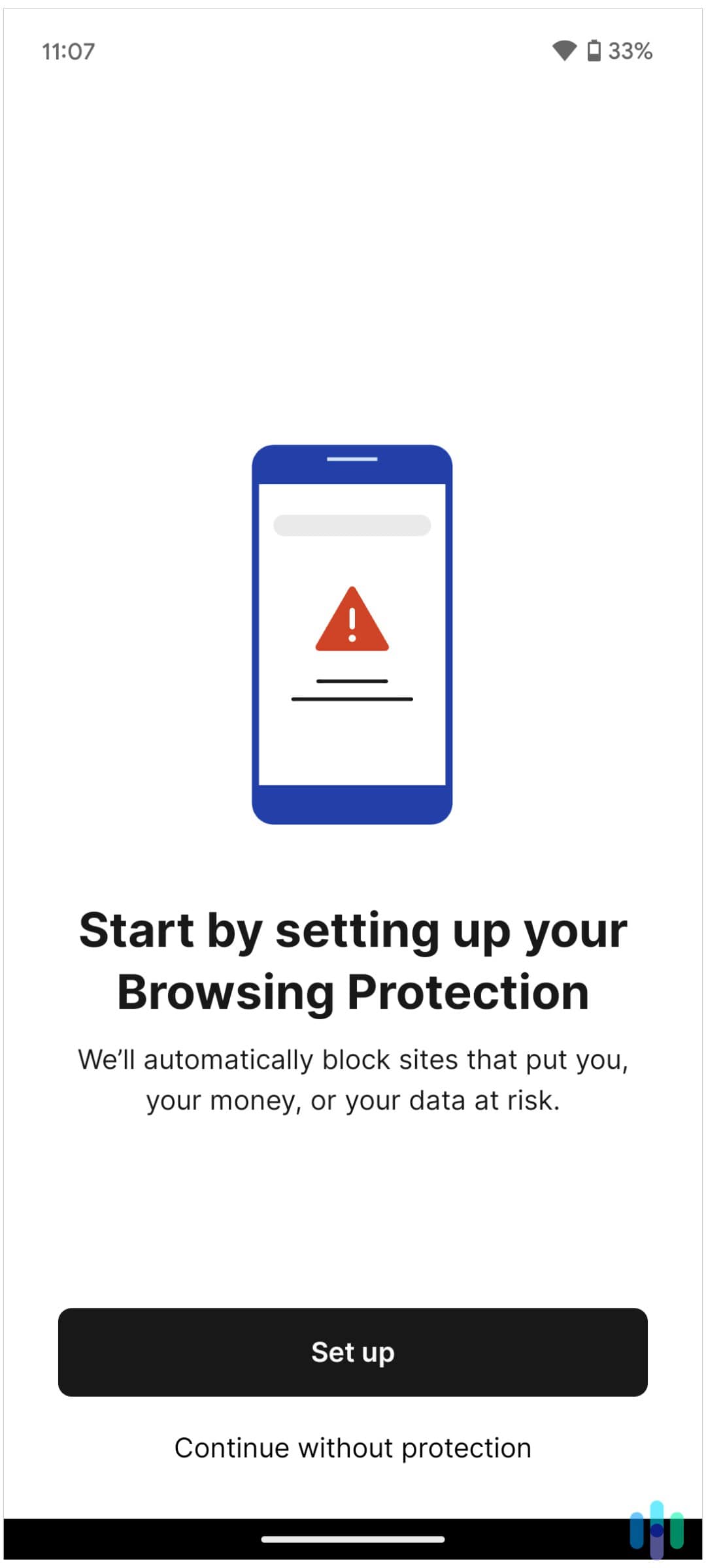
For malware downloads, Guardio was on the ball. Though it was slow to flash its warnings, it prevented us from downloading our test viruses onto our Pixel 6. For zipped files, Guardio scored a 0/5. And, remember, once those malicious files are on your device, Guardio can’t do anything.
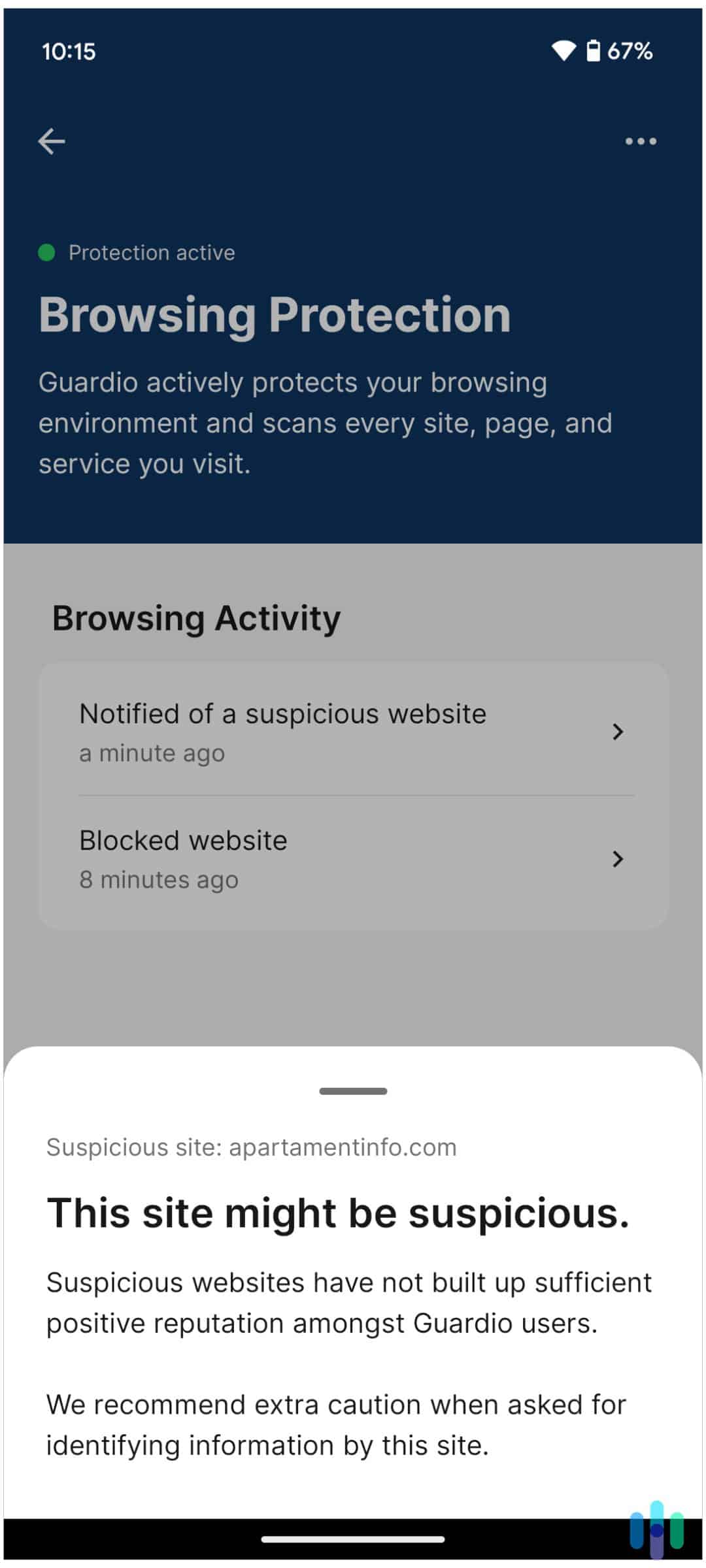
When it came to phishing tests, we weren’t sure what was happening. Guardio was obviously running in the background, because most of the sites wouldn’t load, which, OK, is good. But we weren’t getting any explicit warnings either.
Once, we did get a push notification from Guardio when we attempted to access a website that had been flagged as suspicious. But it was just that one and when we tried to access the same site a few minutes later, we got nothing.
Our Verdict: Guardio’s mobile threat protection works but the user interface makes it difficult to know how or how often it’s working.
Guardio Free Trial
There aren’t many top antiviruses that offer lifetime free plans. Our top antivirus TotalAV does, though system scans are manual with the free plan. Bitdefender is another exception. You can read more about our experiences with Bitdefender in our complete Bitdefender review.
Guardio also has a free option. But, as we mentioned above, it doesn’t block malware, it just alerts you when you’re at risk. In other words, Guardio’s free plan won’t protect you from malicious scripts or downloads once you’ve triggered them. For many of us, this won’t be enough.
However, there is a way to test Guardio without paying. You can try the premium service for a week for free. You’ll have to put your credit card down, but you won’t be charged unless you decide to continue with the service at the end of the trial.
Is Guardio a Good Antivirus?
Guardio is a new breed of antivirus that we expect to be seeing a lot more of in the months and years to come. It sheds the bloat of traditional antiviruses, which are scrambling to offer more and more, and focuses on the one place we’re most vulnerable: the Web. This is an approach we like a lot, though it isn’t perfect.
Pros
- Easy to use and lightweight, works right in your browser
- Unique protection against scams and phishing attacks designed to trick the user rather than the device
- Dark web monitoring for email addresses and phone numbers
Cons
- Only works with Chrome and Edge on desktops
- Less value for money when compared to other top antiviruses
- Doesn’t monitor your system, only what you access online
In the end, if you can stomach working with Google or Edge and don’t mind juggling separate subscriptions for the services Guardio cuts out, Guardio is worth considering for your next antivirus.
FAQs
-
Is Guardio a true antivirus?
Guardio is an antivirus in the sense that it can block malicious websites and downloads, but it doesn’t work like traditional antiviruses do. In some ways, it offers more protection, such as by flagging down potential scams. However, the lack of on-device malware scanning can still leave you vulnerable to many types of malware.
-
How expensive is Guardio?
At present, Guardio has a fixed cost of $119.88 per year.
-
Does Guardio work with other browsers besides Chrome?
Guardio has recently added support for Microsoft Edge, plus they have mobile apps for Android and iOS.
-
Can I use Guardio on Mac and Windows devices?
Yes, you can. Guardio is essentially a browser extension for desktops so it’s device-agnostic.
-
What does Guardio do if I have a virus?
Guardio can’t, unfortunately, do anything once malware ends up on your device.
-
AV-TEST. (Accessed May 20, 2025). Malware.
-
PR Newswire (February 26, 2024). Guardio Labs Uncovers Thousands of Compromised Domains Used to Send Mass Malicious Emails.
-
AMTSO. (May 20, 2025).

